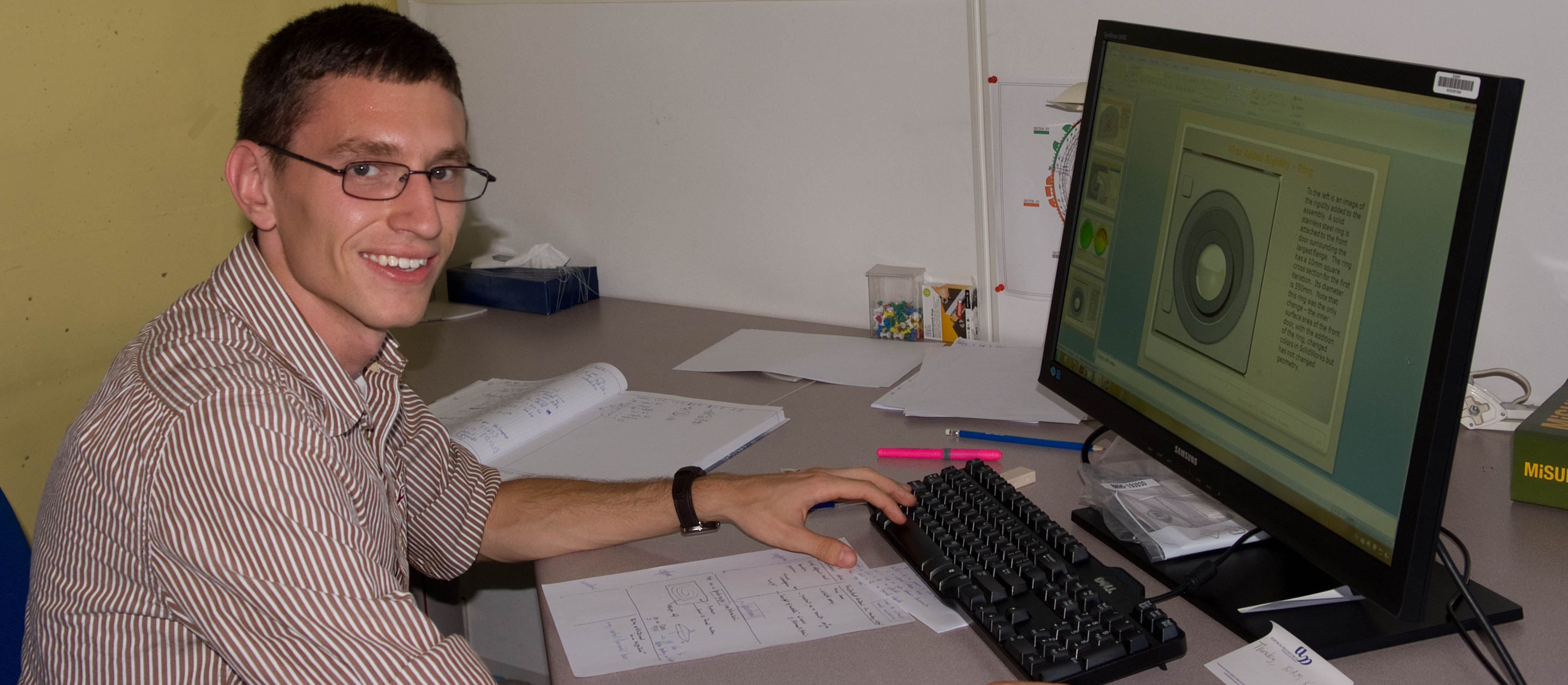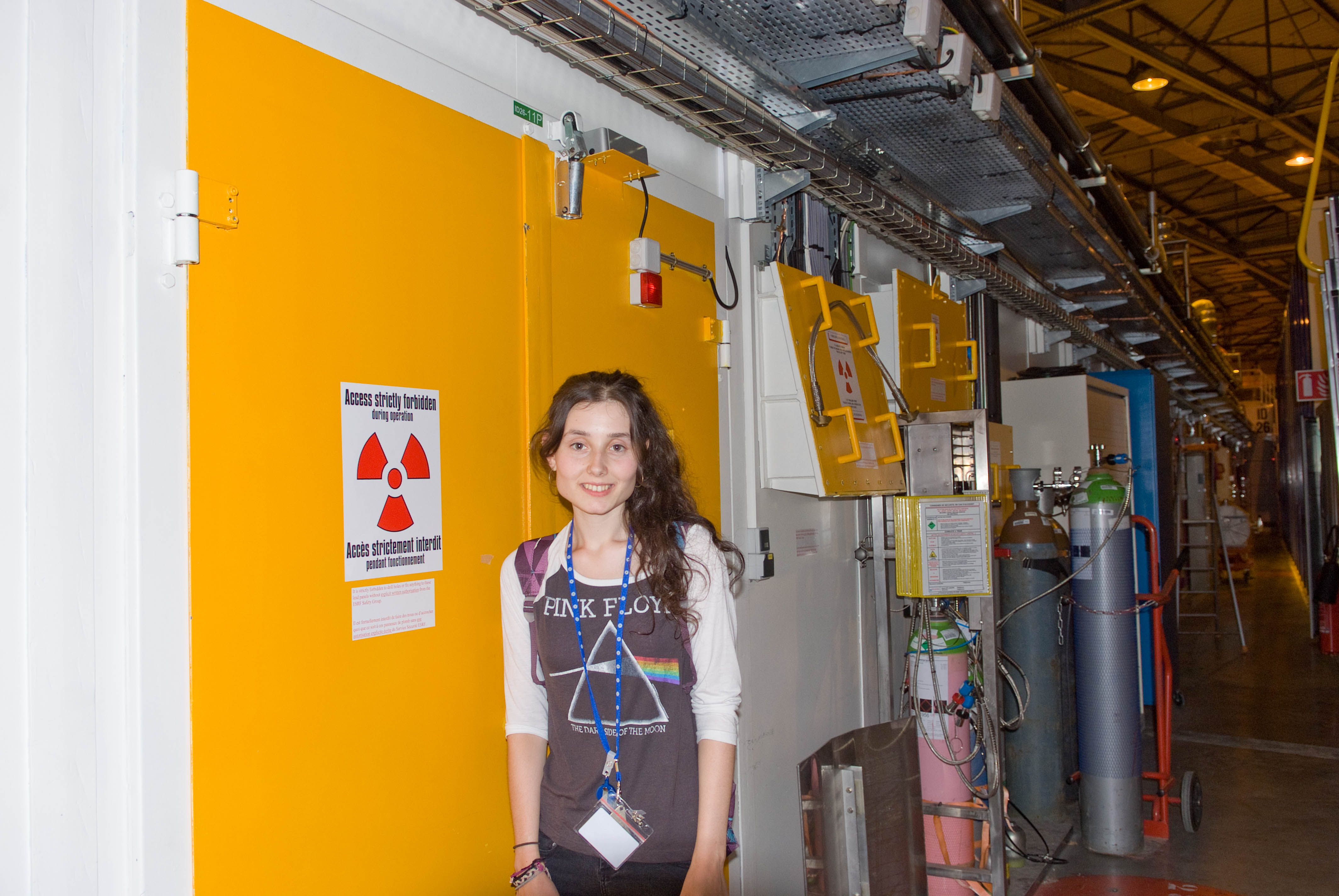- Home
- News
- General News
- Good vibrations:...
Good vibrations: students rate the ESRF
26-07-2013
They have travelled from as far as Canada, Poland, America, Spain or Great Britain, the budding scientists, engineers and technicians who were picked to follow this year’s crop of summer courses in Grenoble have almost finished school. It’s now time to ask if it truly has been a summer to remember.
Share
We interviewed students participating in two different summer programmes that included placements at the ESRF:
Summer Bachelor Programme
This year the ESRF and ILL teamed up with the University Joseph Fourier (UJF) to offer 5 scholarships to the summer school for undergraduates.
The six-week course organised by the UJF was the opportunity to study physics hands-on through an intensive science programme organised around tutorials, laboratory work and site visits.
French language and cultural outings were also part of the package. For the scholars awarded a grant, the course was topped by a two-week placement at the ESRF or ILL, providing the students with the chance to integrate a multicultural research team and use the best instrumentation currently available in world-class research.
Summer Bachelor Programme students from left to right: Colin Payne, Yves Dabin (tutor), Edurne Sagasta, Fabio Comin (tutor), Gabriela Pomery, Daniel Smith.
Seeing the light - students prefer physics
Students could chose between an engineering course and a physics course, both totalling 60 hours of coursework plus 45 hours of French lessons. All three students on placement at the ESRF followed the physics course which offered an introduction to large scale facilities, crystallography, neutron and synchrotron techniques.
From the University of the Basque Country, in Bilbao, Spain, Edurne Sagasta has just completed the 3rd and penultimate year of her physics degree. She particularly appreciated the dosage of tutorials and practicals and the more in-depth approach to crystallography. “I hadn’t done any crystallography before, but now I feel I have a good understanding of the technique”, she says. “The teacher was enthusiastic and approachable and always available to help us out and answer questions.”
For Colin Payne-Rogers, from Rochester Institute of Technology, New York, the physics course seemed to offer a more structured training. Originally enrolled on the engineering course, he was able to switch to the large facilities option after a couple of days. “The large facilities course offered me what I couldn’t get at home. We had a full day with lectures, and teachers around the whole time.”
“I would’ve liked to have more lectures on neutron and synchrotron techniques. The lectures we had were quite dense and I would’ve liked to ask more questions, but we didn’t have enough time”, says Gabriela Pomery, currently in her 2nd year of a joint maths and physics physics honours degree at Aberystwyth University in Wales (UK). “In fact, my only regret is that the course wasn’t longer. These last two months have just flown by. I’d love to stay longer.”
A future with eyes wide open
For Colin the experience has opened his eyes to being part of an international community. “The other students were Polish, Spanish, Welsh, or Canadian, but it didn’t matter, we were very close knit, sticking together in the evenings and helping each other with homework.”
This diversity was also a point that struck him during the two week placement at the ESRF, “The staff would be speaking English together then a couple would switch into French, then sometimes German. It’s amazing how it all works out so well. It’s definitely made me want to learn a second language.” Colin is working in the Advanced Analysis and Modeling Group, under the supervision of Yves Dabin, group head.
The students work under the supervision of an in-house tutor for the duration of their stay. Prior to the placement, the tutor draws up a short project or list of topics to be covered by the student. Throughout the stay, the student reports to the tutor and can refer to the tutor for any variety of question ranging from the very technical aspects of the job to the more practical arrangements and organisation of the ESRF.
Tutors are advised to follow a short training session before taking on the responsibility of a student. For Pieter Glatzel, scientist on ID26 and tutor to Gabriela, although it means extra work, being a tutor is a satisfying and very rewarding task, "Having undergraduates around forces us to break out of an everyday context. It's stimulating to have to adjust to the students and adapt to a different way of working and communicating."
Colin Payne-Rogers in the ESRF’s drawing office.
“I know now that I definitely want to do a physics PhD. Also, I’d never considered studying abroad but now that possibility seems real and highly appealing”, says Gabriela, who is hoping to pursue with a Masters degree after her Bachelors. “The placement at the ESRF has opened my eyes more to a career in science, through hands-on experience and interactions with many scientists.”
Gabriela Pomery outside the entrance to the ESRF beamline ID26.
Before coming to Grenoble, Edurne had been aware of synchrotrons in the course of her training, without however appreciating the full potential of the research possibilities on offer. “Until this trip, synchrotrons were a theoretical thing for me, I’d heard of the ESRF from a fellow student but I would never have imagined the reality of this place. I’ve always loved physics and loved studying physics, but this experience has really brought physics into the real world; and I’ve seen and lived it for myself. That is something you can’t learn from a textbook.”
For Colin, it’s his second experience of being part of a design team. He enjoys collaborating with many different people and exchanging ideas to make progress on a project. “It’s totally made me see that this is what I really want to do. I love the discussion, group meetings and freedom to exchange and experiment that you get in this line of work.” He feels a bit frustrated however that the placement only lasts for two weeks. “It’s a real bonus, though, as most summer schools only propose lectures. I’d love to extend the experience and really take the project I’m working on through to the finishing stage.”
People, people, people
“The highlight of coming here has really been the people and the friends I’ve made”, says Colin. The teachers at UJF were really helpful and interesting. Their presence in the classroom was surprising as was their enthusiasm to show us Grenoble. They even took us out for pizza one night and drove us back to our lodgings!”
For Gabriela, “Whenever someone says France to me in the future, I’ll think about my summer here in Grenoble with the placement at the ESRF, the friends I’ve made and the mountains – I was shocked by the sheer size and presence of nature here, and how the city is captivating because of it. You just don’t get this type of scenery in the UK! The next step for me now is to progress in my scientific career and hopefully to come back and try out the skiing.”
As for Edurne, “The ESRF. That’s been the highlight for me. This place is full of people wanting to understand how things work. It’s what I’ve always wanted to do. I’m amazed when I look around here and see all these people trying to understand more and learning new things all the time.” Edurne has spent the two weeks working under the supervision of Fabio Comin in the ESRF's Surface Science Laboratory.
Some homework for the ESRF
Unanimously, however, it seems the ESRF is a bit too remote for the enthusiasm, energy and abounding curiosity of the students that extends well after the end of the working day. They all agreed that staying on site was a bit of a frustration and that they would rather have been accommodated in town. With a 30 minute walk from the centre and no transport after 8 p.m., it’s hardly surprising. But do not despair, future students, research is our line of business, this time we'll be seeking practical solutions to render the town more accessible.
Technical Apprenticeships
Since 2007, in relation with the Science and Technology Facilities Council (STFC), the ESRF has welcomed technical apprentices from the UK for several weeks over the summer. These trainees, just barely over 20, are propelled into working and living in a context very different to everything they have known before. It is often their first experience abroad.
Rob Filer, Andrew Sanders and Daniel Smith are all apprentices at the Rutherford Appleton Laboratory, in Oxfordshire, UK. They applied for the placements through the STFC and were selected to work at the ESRF in July.
Rob and Andrew are working on the beamlines in the Structural Biology group under the supervision of David Flot, engineer; Daniel spends most his time in the offices and workshops of the Mechanical Engineering group, and is supervised by Pascal Bernard, engineer.
STFC apprentices from the Rutherford Appleton Laboratory with their ESRF tutor.
From left to right: Rob Filer, Andrew Sanders, Daniel Smith, David Flot (tutor).
For Daniel, 20, the major part of the three week placement has been spent measuring and weighing, sketching and modeling. His project consists of designing Plexiglass showcases and instrument supports for an assembly of different beamline components. These components are often “historical” elements that were used on the first ESRF beamlines, back in 1994. Once finished, the assembly will be exhibited as part of the European art and science project, PLACES, in which the ESRF is engaged through a participative experience called Thinkrotron, in collaboration with the Grenoble centre for scientific, technical and industrial culture (CCSTI).
Daniel Smith helps out in the mechanical engineering workshop.
“I’ve seen a different approach to solving problems here. It’s an experience I’ll be able to take back to the UK with me and put to use,” says Daniel, who would definitely recommend the placement experience at the ESRF to his colleagues back in Oxfordshire.
He particularly appreciated the French lessons that took students from the classroom out into the streets. The practical approach to French had the students carrying out missions requiring them to use the language in an everyday context, from buying bus tickets and working out a trip route to ordering food in a restaurant. “I feel confident now about being able to ask for small things and trying out the language. In fact, it’s helped me in my relations with French staff at the ESRF. They seem to prefer if I at least try to speak to them first in French,” says Daniel.
For Rob Filer, it’s the second year running that he has benefitted from the placement programme. In 2012, he worked for three weeks at the neighbouring ILL. “I’ll try to come back again next year, if possible. Second time round, I feel more confident with the language and finding my way about.”
Andrew Sanders, a second year electrical engineering apprentice, feels the experience at the ESRF has given him a more global view of the variety of tasks involved and different skills required to work on a beamline. With Rob, they have benefitted from the close-up experience of decommissioning a beamline, while being able to observe the primary phase of the new beamline ID30B.
“There’s so much experience coming out of this – working in a different country, living on my own, having to travel around and work in a foreign environment. This experience is unique”, says Andrew.
Text by Kirstin Colvin
Top image: Edurne Sagasta in the ESRF’s Surface Science Laboratory. During her placement, she worked on the project to develop in-house an atomic force microscope for synchrotron X-ray beamlines.







